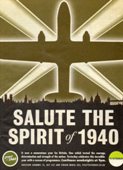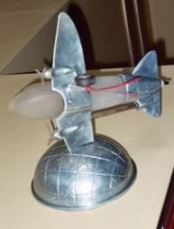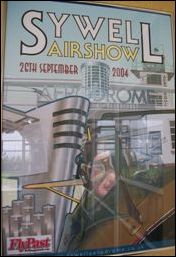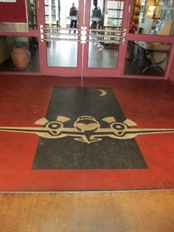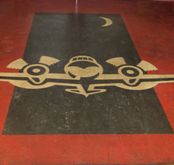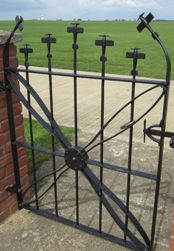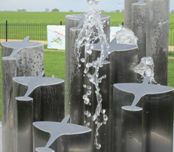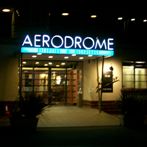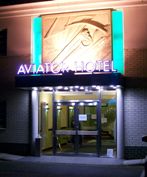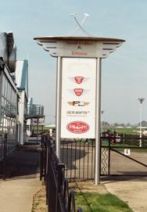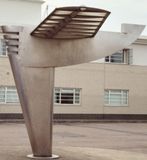The Aviator - Celebrating 90 Years
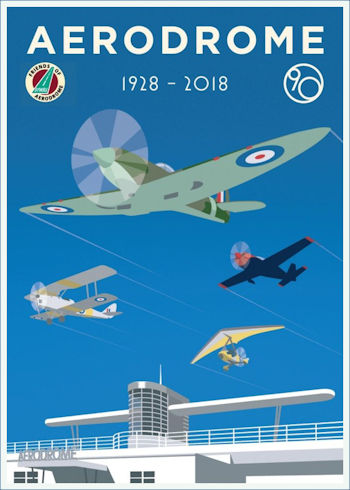
The Aviator Hotel is situated on the Sywell Aerodrome and has been lovingly preserved to keep the tradition of WWII pilot training arena.
Reproduced below is an article I wrote about the Aviator and which has featured in the Seahorse Newsletter produced by the 'Friends of the Midland Hotel.'
I remember my childhood well, I return there in my thoughts frequently as I ponder over what influenced my love of the art deco/moderne period and when it was that I consciously became so fascinated by its shapes and colours?
I was allowed to read “Look and Learn” as my parents believed in its supplemental educational value and eventually I was allowed to have a girlie comic all of my own where I became heavily influenced by a serial entitled “The 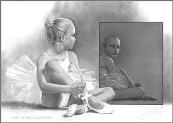 Secret Ballet School.” My sister, who was instrumental in introducing me to a wide range of books in my adolescent period only remembers having access to something called “The Children’s Newspaper.” My friend, Julie, on the other hand, had two brothers and when I went round to her house we disappeared into the loft and read “Superman” comics. How I loved the idea of the futuristic society on Krypton, the short skirts, the sophisticated capes, the boots that went with the short skirts. The colourful skyscraper buildings bunched together looking so elegant and clean, flying automobiles, tubes connecting buildings. Of course Krypton exploded, but the City of Argos survived long enough to give us “Supergirl” and
Secret Ballet School.” My sister, who was instrumental in introducing me to a wide range of books in my adolescent period only remembers having access to something called “The Children’s Newspaper.” My friend, Julie, on the other hand, had two brothers and when I went round to her house we disappeared into the loft and read “Superman” comics. How I loved the idea of the futuristic society on Krypton, the short skirts, the sophisticated capes, the boots that went with the short skirts. The colourful skyscraper buildings bunched together looking so elegant and clean, flying automobiles, tubes connecting buildings. Of course Krypton exploded, but the City of Argos survived long enough to give us “Supergirl” and 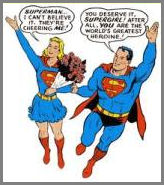 the evil genius “Braniac” shrank the City of Kandor thus preserving for posterity that most noble relic of a lost planet. Siegel and Shuster really played to my imagination!
the evil genius “Braniac” shrank the City of Kandor thus preserving for posterity that most noble relic of a lost planet. Siegel and Shuster really played to my imagination!
My parents were probably amongst the first to invest in a television and I remember being allowed to watch the Adventures of Robin Hood [he being our local hero] and the other historic heroes – William Tell and Ivanhoe. But, history was history not the future. One night I was sent to bed in the middle of a film [a regular occurrence] – it was, apparently a film about war, but I was fascinated with how the decades were portrayed as speeding by. Sneakily, after an appropriate [in my mind] time lapse, I came down to complain of thirst, knowing my mother would not allow me to take the glass of water back upstairs with me. As I dawdled over the drink, the image on the screen was completely different to the one I had left. No more war and pestilence, but clean sleek lines, air personnel ruling the world from the clouds – I was in heaven, but then, inevitabIy I outstayed my welcome and was sent back to bed. It was many years later that I discovered that the film that had so fascinated me was “Things to Come” starring Raymond Massey based on H. G. Wells short story “The Shape of Things to Come”. In the meantime 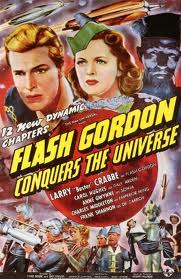 I had become hooked on the Buster Crabbe serialisation of “Flash Gordon” and “Buck Rogers”. I wanted more and came across “Metropolis” [same name as the city Clark Kent moved to] and that, I think is when I became totally hooked on all things futuristic despite this film having nothing to do with Superman. It was all further compounded by “Brave New World” by Aldous Huxley being selected as one of my set books for my “A”-level English Literature – images of Krypton and all things moderne took hold of my imagination.
I had become hooked on the Buster Crabbe serialisation of “Flash Gordon” and “Buck Rogers”. I wanted more and came across “Metropolis” [same name as the city Clark Kent moved to] and that, I think is when I became totally hooked on all things futuristic despite this film having nothing to do with Superman. It was all further compounded by “Brave New World” by Aldous Huxley being selected as one of my set books for my “A”-level English Literature – images of Krypton and all things moderne took hold of my imagination. 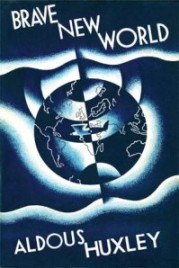
My quests concerning the search for the Midland and Ocean Hotels are well documented elsewhere and my husband and I spent 12 happy anniversary away-breaks on Burgh Island; the time had come to explore something new. The “find”, although we didn’t know what a “find “ it was to be came in the form of the Aviator Hotel situated on the Sywell Aerodrome – a privately owned enterprise whose greatest advantage over the Midland, Ocean and Burgh is that it has been preserved rather than restored.
Situated in Northamptonshire we decided that it was close enough not to merit more than a one-night stay. It proved a little tricky to find but once we were on the last lap the aerodrome was well sign-posted with notice of how to proceed to the hotel avoiding the airfield. The only way to enter the hotel forecourt to appreciate its full splendour is through the designated gate. My jaw dropped – turning into the gate, in front of me was, in full glorious shimmering technicolour, the set of “Things to Come”. It was remarkable – on our left was the accommodation block, in the centre was a large stainless steel streamlined 30s aeroplane model on a plinth and to the right was the full splendour of the entrance to the reception and bar areas. The only visual blight consisted of the number of modern cars parked on the forecourt.
The history of the aerodrome and what is now the hotel is reproduced in condensed form here from the website :
“Sywell is unusual in having remained in private ownership since its founding over 75 years ago.
The first aerodrome, occupying the western portion of the present site, was prepared by the members of the newly formed Northamptonshire Aero Club and opened in 1928.
Sywell quickly became a mecca for Club and private pilots and its annual air displays attracted wide participation.
Flying training became nationally important as Britain rapidly expanded the Royal Air Force from the mid 1930s. Sywell played a key role following the establishment of a large flying school by Brooklands Aviation to teach RAF pilots to fly and the establishment of the local RAF Volunteer Reserve.
During the Second World War activities at Sywell included the expansion of flying training, repairs to 1,841 of the RAF's Wellington bombers and completion and flight testing of some 260 Lancaster Mk 2 four engined bombers.
Approximately 2,500 wartime RAF, Commonwealth and Allied pilots were trained at Sywell; the Aerodrome was also the centre for training the "Free French" pilots who had escaped to England from occupied France".
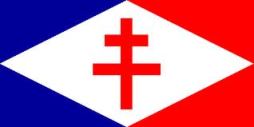
Those same pilots slept in what is now the Hotel which is really just the old accommodation block providing utilitarian but clean and comfortable sleeping quarters. Staircases reflect the aviation theme, the wrought ironwork depicts stylised aircraft and related images.
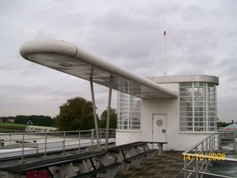
They also relaxed in the bar which is full of historical references – propellers provided by Douglas Bader, telegrams from the War Office and walls of pictures of the heroic pilots. They also have the most delicious wall-lights in the shape of little pot-belly aeroplanes reminiscent of the old Universal opening film credits. Leaving the bar and going into the outside area and garden, the layout is so familiar from the many air-force related war films. We could just imagine the pilots lounging around on their motley assortment of chairs, deckchairs or anything they could sit on or lean against, smoking their cigarettes, reading their newspapers just waiting for the claxon that would be the signal for them to come to life, vault over the fences and leap into their aircraft. Of course as this was a training centre that romanticised version is perhaps a little bit of an exaggeration, however I defy anyone taking their drink out into this little back garden resting place and not thinking of that scene from the “Battle of Britain” when the non-English speaking freedom fighter pilots received their commendations after disobeying orders and springing into unauthorised action!
Visit the Aviator and just steep yourself in this beautifully preserved and perfectly representative creation of “Wings over the World.”
The Marshall Group
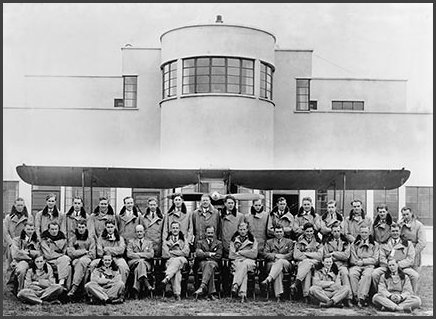
"In 1938 a major flying training school for the RAF Volunteer Reserve was established by Marshall and training soon got into its stride with over 600 new RAF pilots trained before the Battle of Britain commenced. This increased in size and tempo so that by the end of the Second World War, the company had trained over 20,000 aircrew, including pilots, observers and flying instructors. The training scheme was universally adopted by the Royal Air Force in 1941 and continues to this day."
Page refreshed : 17th April 2020 (G)
